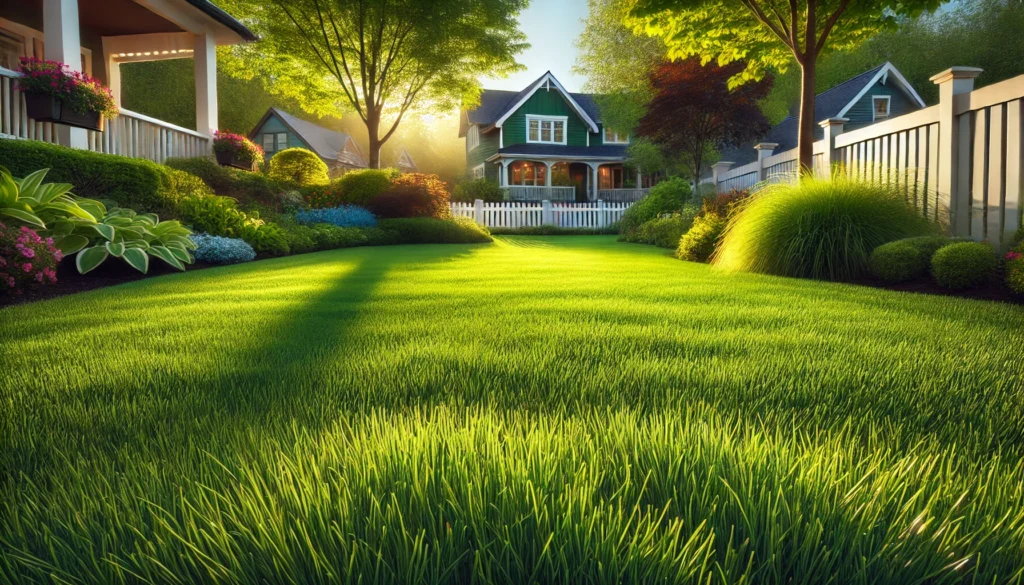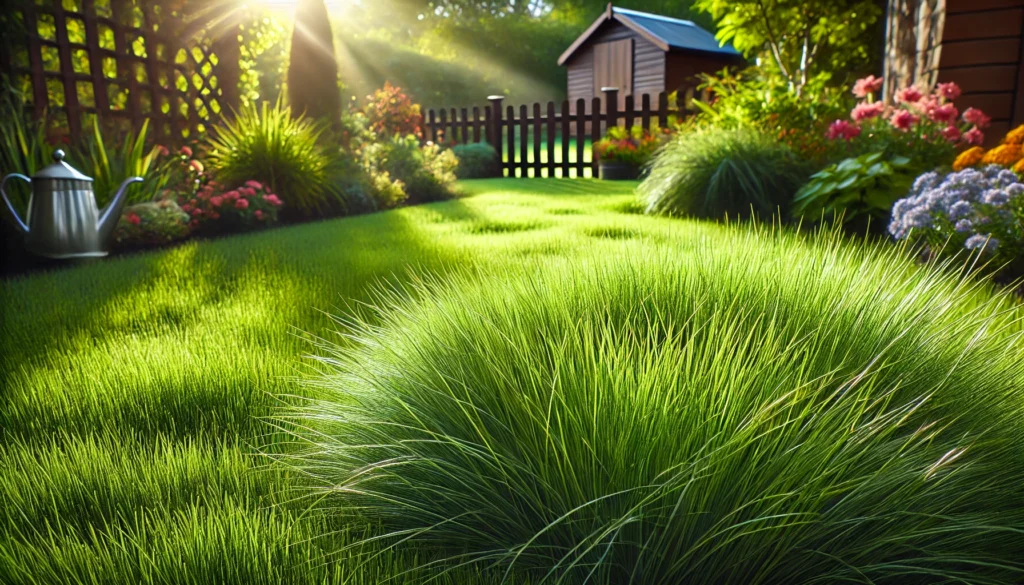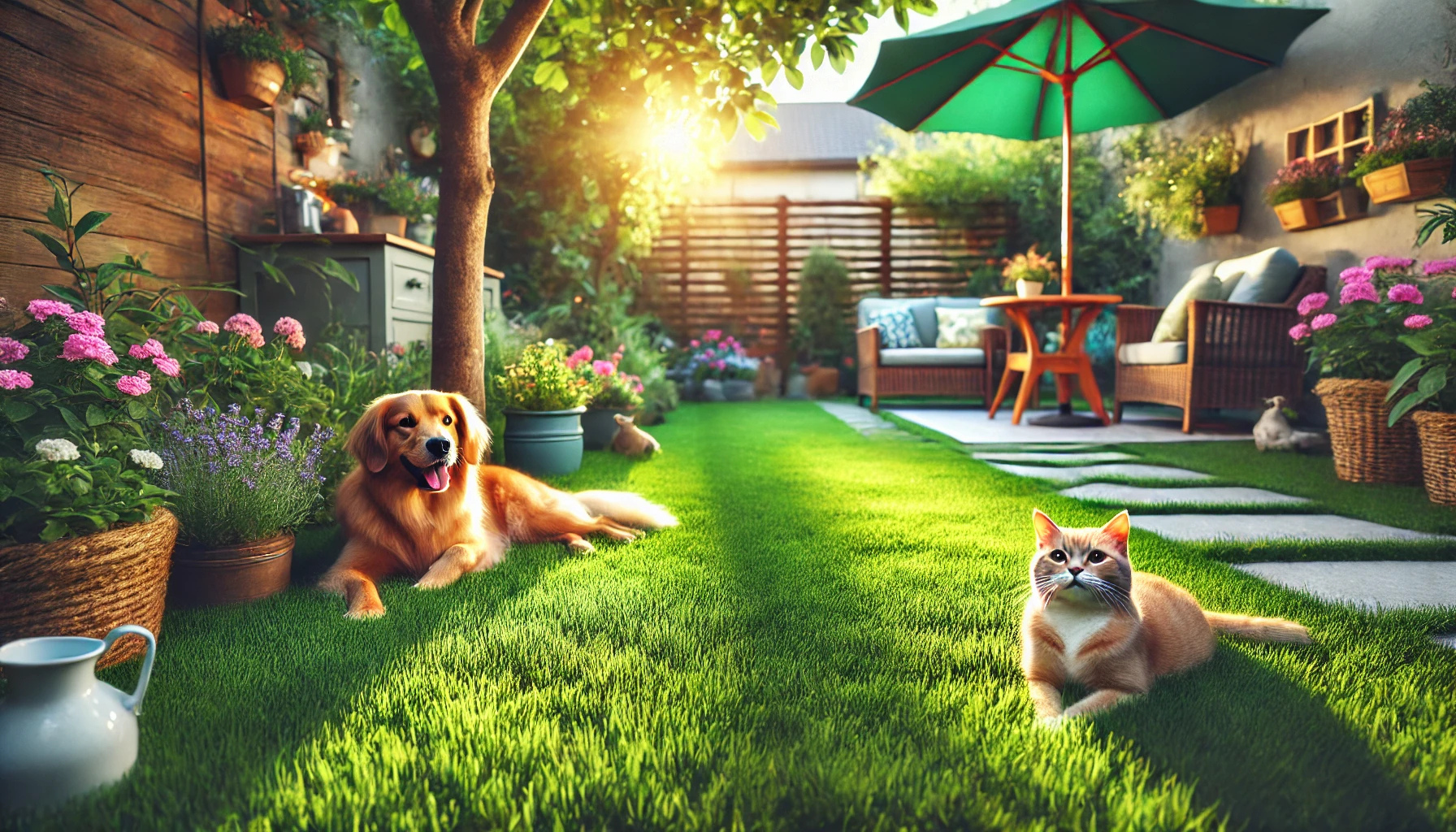Pet-Friendly Backyard Grass: How to Keep Your Lawn Safe and Beautiful
As a lawn expert with years of experience, I’ve come across countless homeowners who dream of having a lush, green backyard where their pets can frolic without causing havoc. However, maintaining a lawn that balances beauty and durability while being safe for pets is no small feat.
In this article, I’ll explain everything you need to know about creating and maintaining pet-friendly grass, sharing practical tips and my first-hand experiences as Jack Ralph, a devoted advocate for sustainable and pet-friendly Backyard Grass and Lawns.
Understanding Pet-Friendly Backyard Grass
Pet-friendly grass is more than just a buzzword; it’s about creating a safe backyard environment for your furry companions while remaining easy to maintain and visually appealing. Pets, especially dogs, can be tough on lawns. From digging to bathroom breaks and endless zoomies, your grass faces daily challenges. A well-chosen pet-friendly lawn ensures safety for your pets, durability against wear and tear, and minimal toxicity in case of accidental ingestion.
Benefits of Pet-Friendly Backyard Grass
1. Durability and Resilience
Pets love running, jumping, and playing, often leaving regular grass patchy and worn. Pet-friendly grass varieties, like Bermuda grass or Kentucky Bluegrass, are highly durable and recover quickly from heavy traffic, making them ideal for active pets.
2. Non-Toxic Options
Some grass types and fertilizers contain harmful chemicals that can endanger your pets. Choosing non-toxic grass and organic care methods ensures your pets remain safe, even if they chew on the grass or lie on it for hours.
3. Reduced Maintenance
Many pet-friendly grass varieties are low-maintenance, requiring less frequent mowing and fertilizing. This makes it easier for pet owners to balance lawn care with their busy lives.
4. Aesthetic Appeal
Despite being pet-friendly, these grasses don’t compromise on beauty. They remain lush, green, and vibrant, enhancing the overall look of your backyard.
Drawbacks of Pet-Friendly Grass
1. Urine Spots
Pet urine, particularly from dogs, contains high nitrogen levels, which can burn grass, leaving yellow spots or brown patches. Even the most resilient grass types are vulnerable if not properly managed.
2. Initial Costs
Installing high-quality pet-friendly grass can be expensive, especially if you opt for sod over seeding. The upfront investment may be higher than traditional options.
3. Frequent Repairs
Even with durable grass, wear and tear from pets may require reseeding or patching, adding to ongoing maintenance efforts.
4. Shade Limitations
Some pet-friendly grass types, like Bermuda grass, thrive in full sunlight but struggle in shaded areas, limiting their suitability for all backyard conditions.
Top Grass Types for Pet-Friendly Lawns
Through my years of expertise, I’ve tested various grass types to determine the best options for pet owners. Here are my top recommendations:
1. Bermuda Grass

- Why It’s Great: Extremely durable and quick to recover from damage.
- Ideal Conditions: Thrives in warm climates with full sun exposure.
- Challenges: Requires regular maintenance to stay healthy.
2. Kentucky Bluegrass

- Why It’s Great: Known for its dense, lush appearance and rapid recovery.
- Ideal Conditions: Best for cooler climates.
- Challenges: Requires consistent watering and care.
3. Perennial Ryegrass

- Why It’s Great: Fast-growing, making it ideal for reseeding and repairs.
- Ideal Conditions: Performs well in moderate climates.
- Challenges: Less durable in high-traffic areas compared to Bermuda grass.
4. Tall Fescue

- Why It’s Great: Deep root systems make it drought-resistant and low-maintenance.
- Ideal Conditions: Adapts well to both sun and shade.
- Challenges: May not recover as quickly from heavy damage.
Personal Experiences: Lessons from the Lawn
One of my most memorable projects involved a family with two hyperactive Labrador retrievers. They loved their dogs but were tired of the unsightly yellow patches and muddy areas ruining their backyard. After assessing their yard, I recommended a blend of Bermuda grass for its durability and Perennial Ryegrass for quick recovery in damaged spots.
We started by aerating the soil, then laying sod in high-traffic areas and overseeding the rest of the lawn. To address urine spots, we installed a dog-friendly water feature that encouraged the dogs to relieve themselves away from the grass. Within months, the yard transformed into a lush, pet-friendly oasis. The family was thrilled, and the dogs finally had a backyard they could enjoy without restrictions.
How to Protect Your Lawn from Pet Damage
1. Preventing Urine Spots
- Water Immediately: Dilute urine by watering the area as soon as possible.
- Use Lawn Repair Products: Apply pet-safe grass repair treatments to damaged spots.
2. Managing Digging Behavior
- Designate a Digging Zone: Create a specific area filled with loose soil or sand where pets can dig freely.
- Provide Distractions: Use toys or engage pets in interactive play to redirect their energy.
3. Minimizing Traffic Wear
- Rotate Play Areas: Change the play zones regularly to prevent overuse of one area.
- Introduce Hardscaping: Add pathways or Outdoor patios to reduce grass exposure in high-traffic areas.
4. Fencing and Boundaries
- Use low, pet-friendly fences to protect fragile areas, like flower beds or newly seeded patches.
Balancing Lawn Care with Pet Safety

To maintain a pet-friendly lawn, avoid using harsh chemicals or pesticides. Instead, opt for organic fertilizers and pest control methods. Regularly aerate and reseed to keep the lawn healthy and repair any damage promptly. As Jack Ralph, I always emphasize that a healthy lawn starts with healthy soil—test your soil’s pH levels and amend it as needed for optimal grass growth.
Pros and Cons of Pet-Friendly Grass
Pros:
- Safe and non-toxic for pets.
- Durable and resilient against heavy pet activity.
- Enhances the backyard’s appearance.
- Can be tailored to suit various climates and yard conditions.
Cons:
- May require frequent repairs and maintenance.
- Susceptible to urine spots and digging damage.
- Some varieties are climate-specific, limiting options.
- Higher initial costs for installation.
Alternative Solutions for Pet-Friendly Backyards
If maintaining natural grass feels overwhelming, consider these alternatives:
1. Artificial Turf
- Mimics the look of grass while being low-maintenance and pet-resistant.
- Easy to clean and unaffected by urine or digging.
2. Clover Lawns
- Durable, eco-friendly, and naturally resistant to pet urine spots.
- Requires less mowing and no fertilizers.
3. Hardscaping Elements
- Incorporate stone pathways, gravel, or mulch to reduce grass dependency in high-traffic areas.
Conclusion
Creating a pet-friendly backyard is an investment in your pet’s happiness and your lawn’s longevity. While it may require effort, the rewards—a safe, vibrant space for your furry friends to enjoy—are well worth it. From choosing the right grass to managing common challenges like urine spots and digging, every step brings you closer to a perfect balance between beauty and functionality.
As Jack Ralph, I’ve seen firsthand how a well-maintained, pet-friendly lawn can transform a backyard into a haven for both pets and their owners. So, roll up your sleeves, pick the right grass, and start your journey toward a pet-friendly paradise today.
Frequently Asked Questions (FAQs)
Q1. What is the safest grass for pets?
Bermuda Grass, Kentucky Bluegrass, and Tall Fescue are safe and durable options for pet-friendly lawns. They are non-toxic and resilient against pet activity.
Q2. How do I fix yellow urine spots on my lawn?
Water the spots immediately to dilute the nitrogen, and use pet-safe lawn repair treatments or reseed with fast-growing grass like Perennial Ryegrass.
Q3. What fertilizers are safe for pets?
Use organic or pet-friendly fertilizers labeled as non-toxic. Avoid chemicals like synthetic pesticides or herbicides that can harm pets.
Q4. How can I stop my dog from damaging the grass?
Train your dog to use designated bathroom or play areas, and rotate play zones to prevent overuse of certain spots.
Q5. Are artificial lawns a good alternative for pets?
Yes, artificial turf is low maintenance, resistant to digging, and easy to clean, making it a practical choice for pet owners.
Jack Ralph

hey, I’m Jack Ralph, a dedicated grass and lawn expert with years of experience creating beautiful outdoor spaces. I can help you achieve the lawn of your dreams, from seeding to mowing, turning your yard into a natural masterpiece.
Look no further—I’m the key to transforming your lawn dreams into reality! and here to help you achieve a lawn that’s not just a patch of grass, but a canvas of natural artistry.







